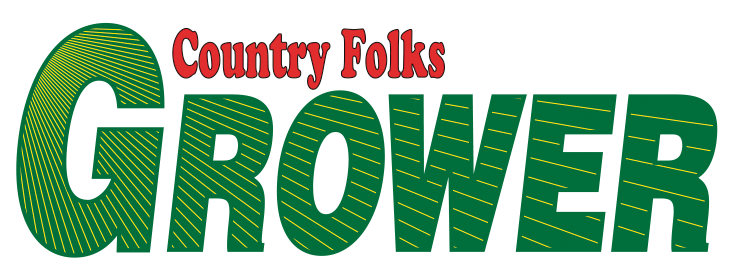Equipment maintenance for managing weeds
Many farmers have parked their harvest equipment; others aren’t quite finished in the field.
Some farmers will still be preparing seed beds in mid to late autumn, while others won’t begin field work until early spring. In any case, taking time during the off season to repair, adjust and have all equipment field-ready is well worth the time and effort.
Sam Tilton, Glacial Drift Enterprises, urges farmers to begin maintenance as soon as possible after crops are harvested.
“Check planters for accuracy, check cultivators for accuracy and maintain cultivators and tractors,” said Tilton. “Consider pre-setting the depth of your sweeps, plan a stale seedbed for less competitive crops and consider your cultivation progression.”
Tilton explained the importance of checking planters for accuracy. “You can only be as accurate as your rows,” he said. “Even if you have a laser-guided weeder, if your rows are off or not parallel, you’ll have to back off that row and won’t be able to get as close.”
It’s critical to check transplanters and seeders. Most toolbar work is done with seeding or transplanting units from the toolbar. Use a tape measure on the toolbar to make sure the clamps for seeding units are accurately placed and where they need to be on the bar.
“A lot of us are using seeders and transplanters that are 10, 30 or 70 years old,” said Tilton. “Even if it’s lined up on the toolbar, something may have bent over the last 50 years. Pull the unit on the tractor into a shed or flat surface, and after you’ve measured on the toolbar where things should be, on the ground, measure the business end where seeds or plants actually go into the ground.”
Check cultivators for accuracy. With a set cultural practice for row spacing, make sure the cultivator is set up to reflect desired spacing.
“Mark on the toolbar where spacing your sweeps and standards should be,” said Tilton. “On your planter and cultivator, it’s nice to have those marks where things should be. If during the season a bolt is loose or something jumps, you can see whether it’s on the paint mark.”
Consider pre-setting the depth of sweep. Tilton does a “shop adjustment” of cultivators prior to using equipment. A flat surface is ideal for setting up a cultivator to ensure everything is equal, then it can be tweaked in the field.
“For setting the depth of cultivators, my rule of thumb for setting the sweeps is three-quarters to one inch deep,” said Tilton.
“If you bring the machine into the shop for adjustment, put a three-quarter-inch piece of wood under the gauge wheel then drop the sweep all the way down to the ground. Do that for every sweep, then you know they’re all set to an even depth.”
Consider a false (stale) seedbed, beginning before you need to plant but allowing seven to 10 days for weed seed germination. The purpose of the false seedbed is to get weeds to germinate. (That usually isn’t a problem in spring because there’s plenty of moisture.) If it’s dry, though, consider watering the weeds so they germinate. Some farmers use a cultipacker to press soil down for good weed seed to soil contact.
“Weed seeds will germinate within the top two inches of soil, and not below that,” said Tilton. “Depth is so important is when you do a false seedbed because at a certain point, unless you’re using an herbicide, we’re going to till to kill germinated weed seeds, then plant. If you till too deeply, you’ll bring up new weed seeds that will germinate.”
To make the most of time during a busy season, some farmers use a mid-mounted basket weeder as a stale seedbed pass, with a seeder behind. As with other equipment, this should be examined carefully to ensure it’s ready for work.
Consider the cultivation progression on your farm. Some people have one weeding tool; others have several. “The general progression is when crops are young is to pull the soil away from crops,” said Tilton. “As the crop gets older, we’re hilling soil to kill in-row weeds. As the crop grows larger, change tools or settings as the crop progresses and can take a stronger tool.”
He added that having a variety of tools is ideal, but the bottom line is timing: hitting the windows when the crop and soil are ready and weeds are small does more to dictate success than having the perfect tool.
Sustainable Agriculture Research & Education (SARE) has published “Manage Weeds on Your Farm – a Guide to Ecological Strategies,” which Tilton recommends as an excellent print resource for weed management.
“There are some fantastic tools out there, but they all need to be used in the right way and in the right progression,” he said. “There are individual chapters on each weed and each type of weed, their lifecycle and the weak points in the weed’s lifecycle so you can target them through depth and timing of tillage.”
If people are already familiar with stacking tools, which is the practice of using multiple tools in one pass, it can work well. If not, Tilton suggested beginning that practice by adding one extra tool at a time. For example, set up side knives with finger weeders, then add an over the row tine weeder.
“I see growers spending money on tools they don’t have the time to learn about, or getting a tool they aren’t able to make the most of,” said Tilton. “Get yourself some parallel linkages and gauge wheels so tools will follow the contour of the ground. Take care of the basics first, then think about tool stacking.”
Tilton summarized a constant for managing weeds: “The most important thing about weed management is creating a size difference between crop and weed, having a low weed density in the row and a low weed seed bank.”
by Sally Colby





